|
Improvements
In Crop Nutrient Banding.
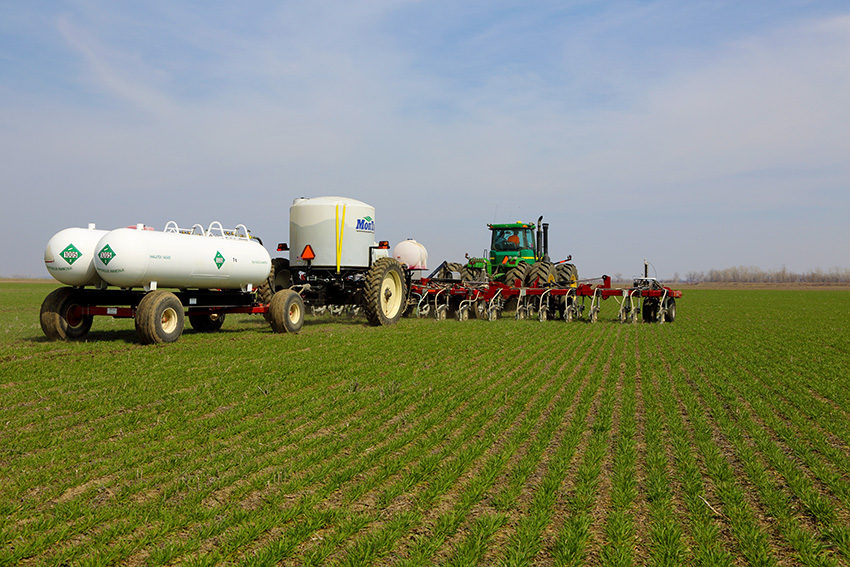
Exactrix
Tool Bars Produce Higher Net Margins.
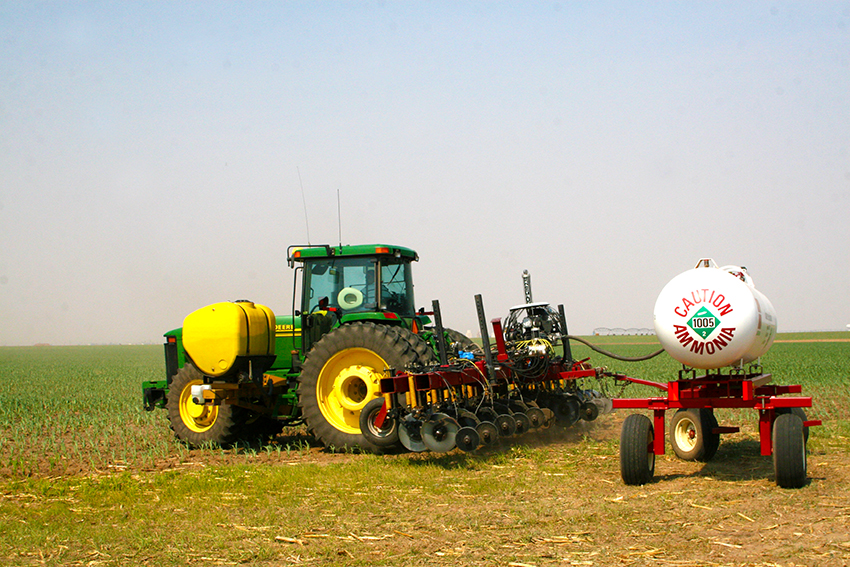
Advanced Technology
Developed For Western Producers.
Page
1
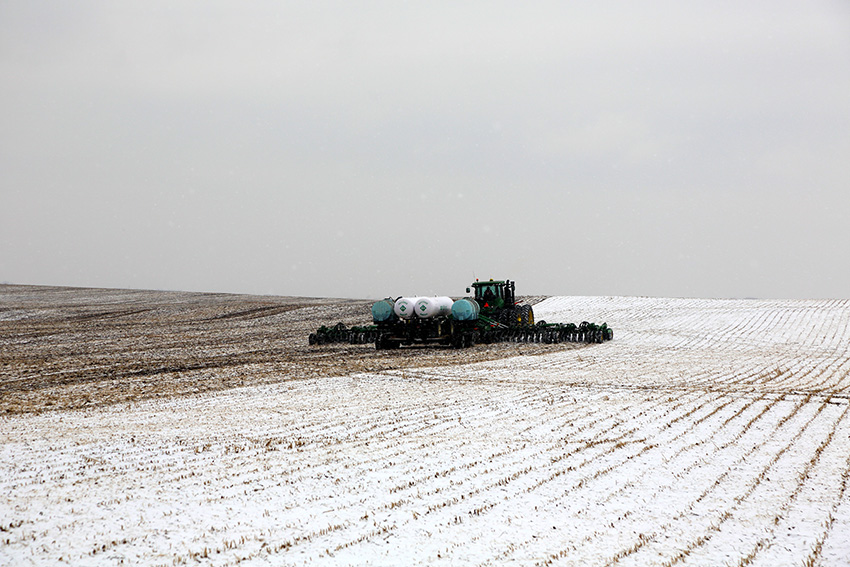
Fall
Banding, Spring Banding and Side Dressing of NH3, Liquids and
Dry Fertilizer on the Great Plains.
Referred
to as two pass No-tillage farming.
Corn, Soybean, Wheat, Sunflower, Cotton, Milo and
Alfalfa.
Accomplished
with shank application, single disc application, and dual
purpose single pass seeders in shank or single disc.
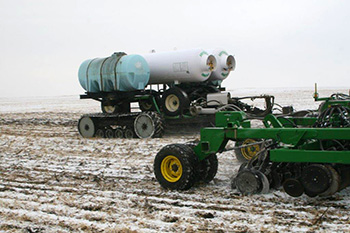
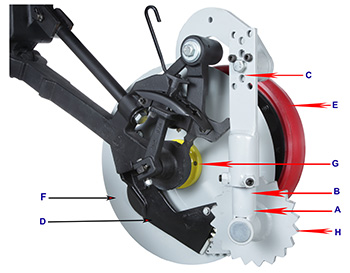
The
improved margin is typically 12% or from $50 to $125 per acre
more net income. Exactrix
is not about N only applications.
Exactrix improves the margin every time with balanced
NPKS&Zn applications using No-tillage systems.
Page
2
Producers that band Exactrix TAPPS and TAPPKTS separately in a two
pass application of nutrients are located throughout the North
American continent.
Single pass application of nutrients reduces timing options,
complicates the machine, raises fertilizer costs and reduces the net
margin. However, single pass applications of TAPPS crystals continue
to be applicable based on farm size and the crop in production.
From
northern
Alberta at 58*N to
southern
Texas at 30*N nutrients are applied separately to assure better
timing and better location of nutrient bands.
Producers band TAPPS separately with row crop, corn in production.
Winter Wheat producers prefer to apply TAPPS twice with single disc
openers to get maximum yields. Large producers prefer to band
nitrogen stabilized TAPPS in the fall for dark northern spring wheat
production.
The reasons for banding separately from seeding are numerous.
The economics are better for some producers and the options are
greater. Some producers fall band TAPPS at nutrient rates that
allow either DNSW production or Corn production. The fertilizer
industry needs fall banding. The fertilizer industry cannot supply
high quality nutrients with superior accuracy if all the nutrients
are applied at time of seeding. The fertilizer industry must resort
to a
high volume,
tons moved system.
The high volume
approach
has poor accuracy using top dressed dry fertilizers and expensive
liquid nitrogen top dressed fertilizer.
Thus lowest cost of production and highest quality crop results in
applications using Exactrix Technology.
There is no argument from the Exactrix owners, “it works”.
Nutrients must have the option of being applied at the right time,
at the right depth and the right chemistry at a very reasonable
cost. Nutrients are always most crop effective when application is
made at 6 inch depths and the soils are moist. Dry fall soil
conditions may require shank type openers and a slight reduction in
efficiency of application compared to single disc application.
1. 1.
Corn producers do not want the complication of applying full season
nutrients at time of planting hybrid seed corn. Typically the planting
window is so short that most producers find it difficult to slow down
the planting operation for in- row starter fertilizer. The last
consideration is to apply full season nutrient rates with a 90 foot
corn planter.
|
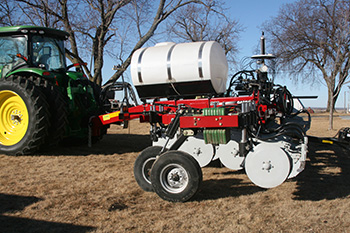
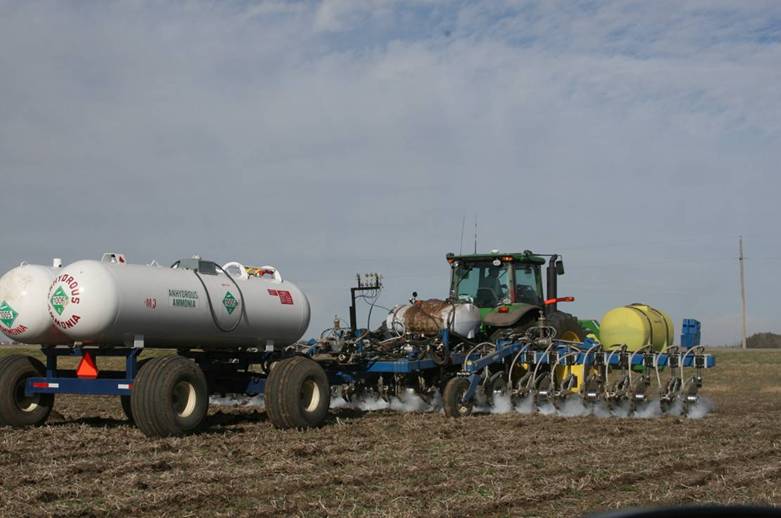
Page
3
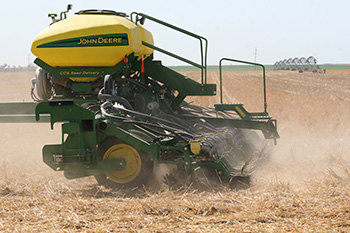 |
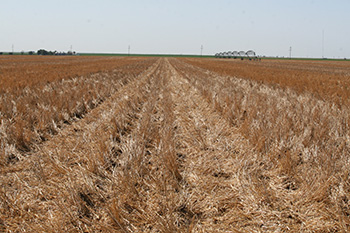 |
|
Another
reason to perform two passes is specialty crops and double crop
systems. A No-Tillage, 20 inch row spacing planter allows double
crop planting. The high speed Exactrix tool bar has banded TAPPS
at 6 inch depths on 15 inch centers.
|
Double
crop No-till production techniques require a high speed, single
disc tool bar for TAPPS nutrient application into heavy residue The
high quality, Triticale residue protects the germination of the
expensive Sunflower confection seed at Moscow, Kansas.
Thus double crop techniques are more successful when time
and moisture are conserved with a high speed tool bar.
Page
4
|
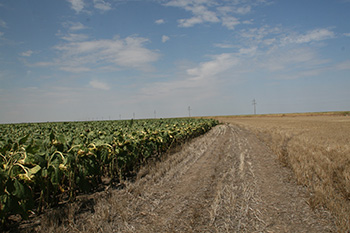
Double
crop sunflowers can be a money maker with proper management at
Moscow, Kansas.
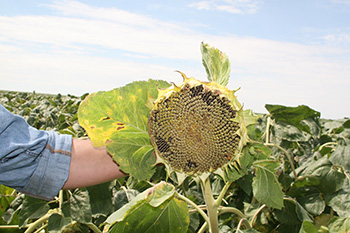
2.
Strip
Tillage results in positional availability of nutrients such as
NH3, dry NPK, liquid
NPKS and micros.
Thus strip tillage production of corn is a two pass operation.
The 30 inch band spacing can be toxic if corn is planted on top
of the bands within 30 days of application. Thus Strip Till is a
preferred fall, late winter application to avoid corn root burn.
Single disc applications at 6 inch depths will not burn
corn roots on 15 inch spacing.
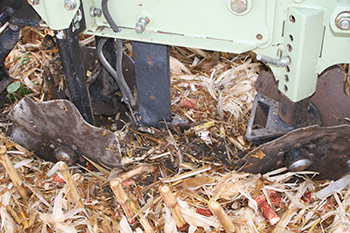
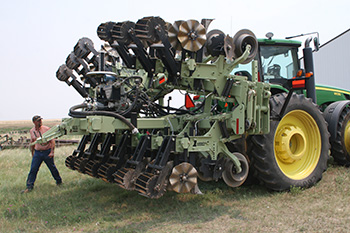
Page
5
3. Large
productive northern wheat and canola farms prefer to average out
their workload by fall banding nutrients with the established work
force. This allows absolute rapid seeding in the spring.
Fertilizer dealers applaud the technique.
Application of TAPPS into established winter canola provides much
higher nutrient efficiency. The producer can roll the dice once
the stand has been well established in October and November.
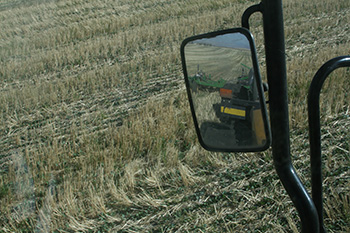
4.
Higher protein and
quality of Dark Northern Spring Wheat results with TAPPS fall
banding. The mobile nutrients are stabilized with crystalline
TAPPS using Thio-Sul®. In
the Pacific Northwest, and now in spring wheat production areas
of the Great Plains, fall banding of TAPPS and TAPPKTS for
spring wheat has proven to be consistently better in wheat
quality and protein. Such areas as Fisher, Minnesota and Steele,
North Dakota have proven significantly better crops with fall
banding on 12 inch centers. In 2014 yields were exceptionally
good with proteins in 14% to 15% range with fall applied TAPPS
on 12 inch centers.
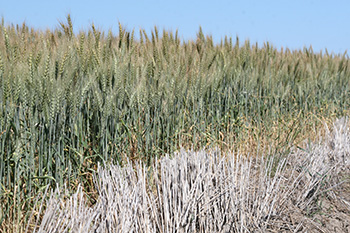
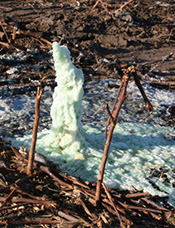
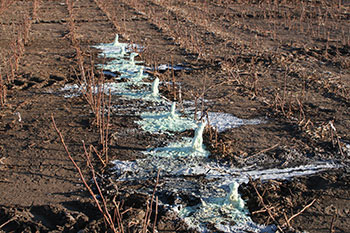
Page
6
5. Typically nutrients such as
NH3 can be purchased in July at a much lower cost. Fall banding
can be implemented for spring cropping with the help of the
fertilizer industry. The fertilizer industry prefers to even out
the work load.

6.
Single
disc openers allow nutrients to be banded after seeding or
planting thus extending the fertilizer season. Winter
wheat responds well to nutrients banded into the growing crop
early spring outperforming liquid streamer bar application by
15%. Goodland Kansas studies show TAPPS to be
especially effective
in raising winter wheat yields.
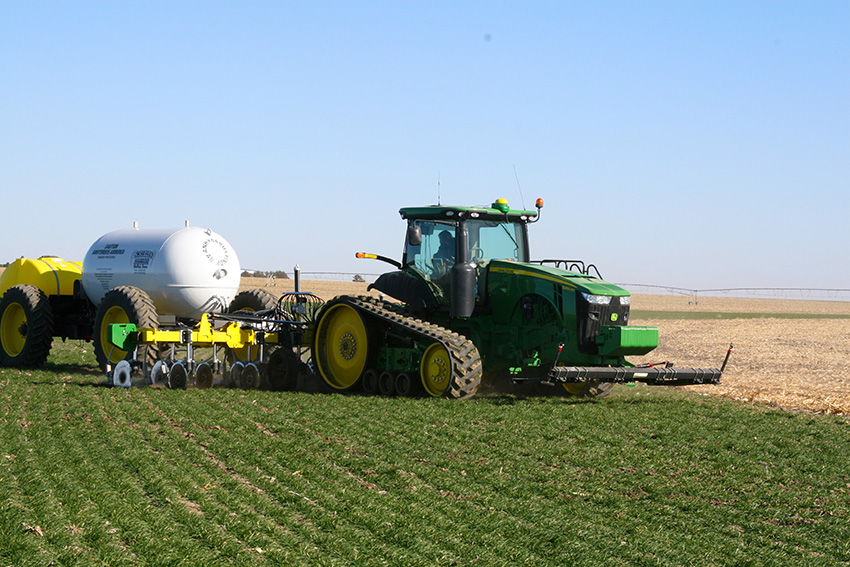
7.
Producers
can now band nutrients in the same window as planting without
burning plant roots. Exactrix
technology of 15, 12 and 10 inch band spacing assures the
nutrients are balanced at 1% CV streaming flow application.
Thus it becomes economically powerful to band just in front of the
planter. Exceptional crop response results are achieved with Milo
and Corn utilizing 6 inch deep banding of TAPPS and TAPPKTS.
TAPPS
nutrient banding is time proven the most effective way to raise
high yielding dryland corn and Milo. Pre-plant banding of TAPPS
always exceeds center pivot application of nutrients.
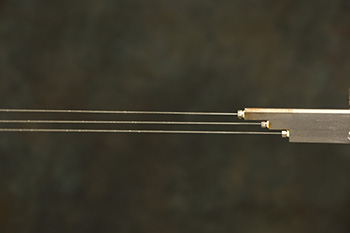
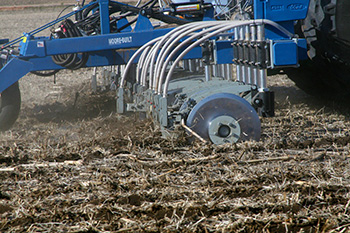
8.
Banding
on 15 inch centers with Exactrix TAPPS and TAPPKTS has produced
improved margins of 12% and in several cases record yields in
every area of the Great Plains.
Exactrix TAPPS bands at 6 inch depths assure good
sealing. Phosphate is most efficient at the 6 inch depth in
Tri-Ammonium Phosphate Sulfate crystal. High
pressure, liquid streaming flow assures a uniform application.
Roots prefer liquid streaming applications because they are more
crop available and will not damage roots. Roots feed on an even
concentration of NPKS& Zinc producing better yields.

Page
7
9.
Separate
application of nutrients with high quality 1% CV Exactrix
application systems allow much more effective management zones.
Typically VRT application is improved since the operator has
more time to pay attention to the application maps, pump rpm’s
and injection pressures. The accuracy or the
Coefficient of Variation
or
CV of the application improves the efficiency of the nutrients
and makes VRT successful.
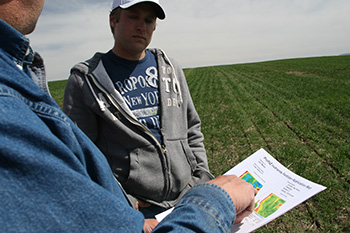
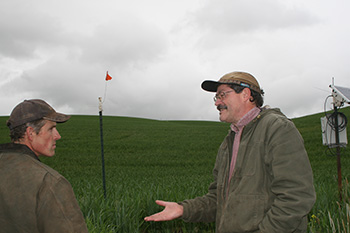
10.
Large producers can rapidly expand their operations with
Exactrix adapted and or designed single disc openers and shank
type openers. Land lease opportunities can be much easier with a
separate banding operation. Fall banding of new land allows the
producer to free up his work load in the spring. Scientists
and producers agree that single pass works and two pass works.
Each producer has a different need.
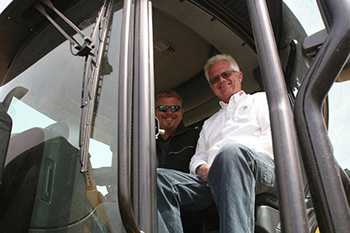
Page
8
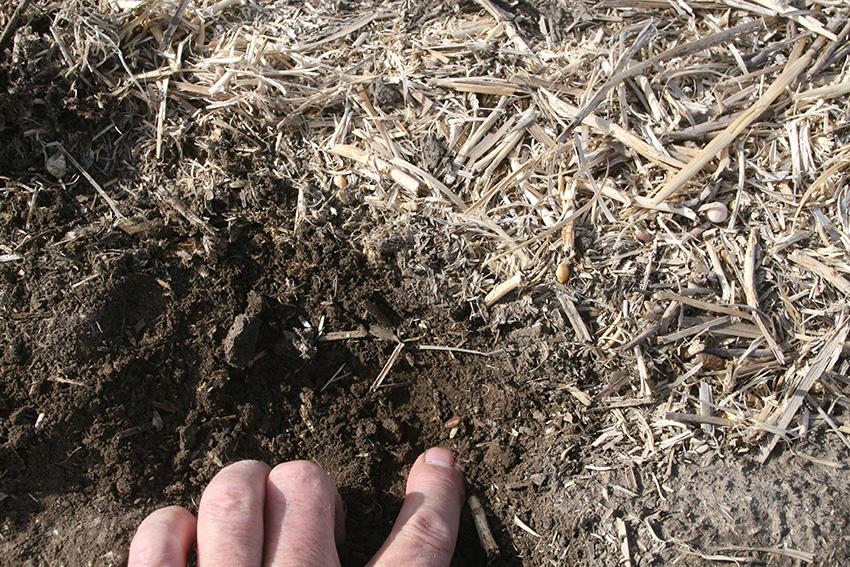
Nutrients
can also be banded into growing winter wheat with single disc
openers. High
quality stands results with virtually no damage to the emerging
winter wheat. Root
channels and surface residue remains effective in absorbing and
holding moisture.
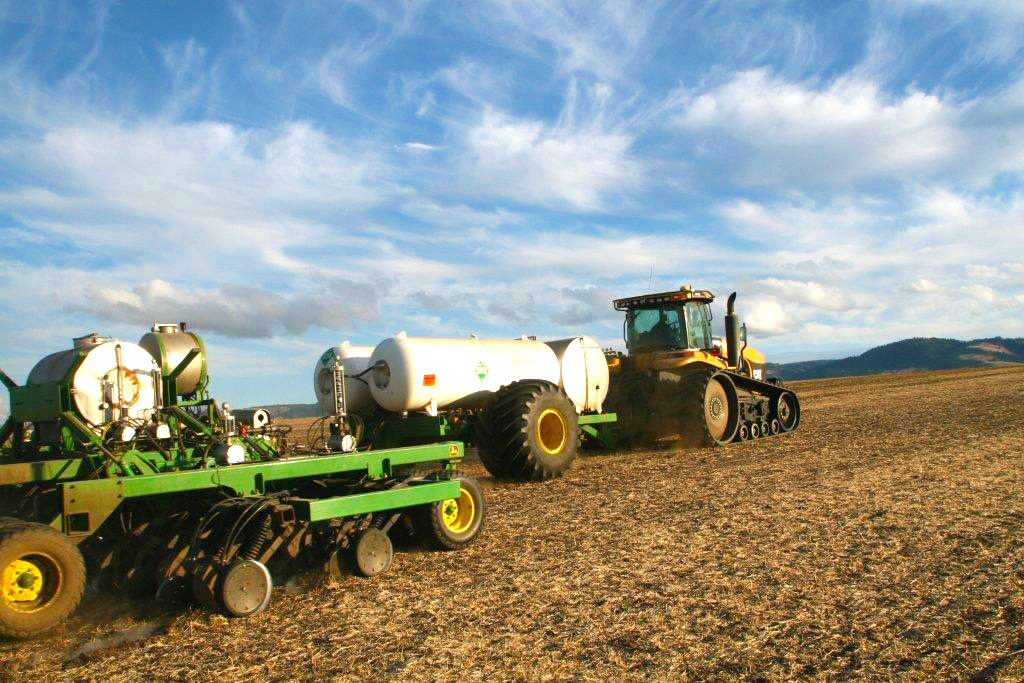
Two
Pass No-tillage systems of winter wheat can be established in
the dry fall with higher yield potential. Winter wheat can be
seeded into dry soil at optimum seeding depths. It
is more important to seed the crop first in dry fall conditions.
The entire crop germinates the same day it rains. The two pass
system allows the single disc No-tillage applicator to locate
stabilized nutrients such as TAPPS much deeper into the emerging
winter wheat with virtually no crop damage. Banding
deep in dry soils is not efficient or desirable in many areas
and landscapes.
Another
major advantage is the single disc seeding and second trip
banding leaves residue on the surface to capture moisture.
The second single disc application of stabilized nutrients is
more crop effective than pre-plant banding or banding and
seeding at the same time. The crop effectiveness of expensive
nutrients is improved by banding into growing roots in moist
soil. Thus nutrients can be safely stored in the root zone in
moist soil conditions.
Shank
openers are not recommended for side dressing winter wheat or
spring wheat.
Page
9
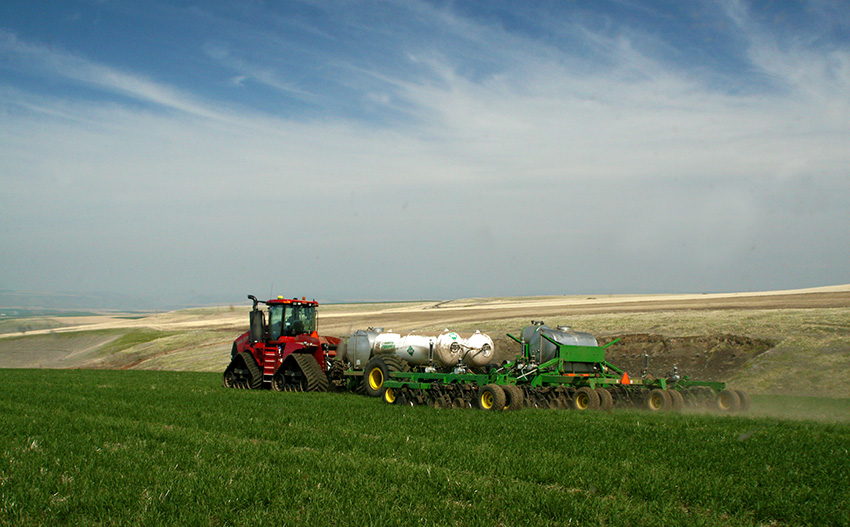
On
the Snake River landscape of Lewiston, Idaho, established Winter
Wheat can also be fertilized in the late fall or early spring
with the single disc tool bar. TAPPS
with a balance of NPK and S does add to the yield potential. The
critical timing aspect requires the nutrients
can be banded just as
the crop breaks dormancy and machinery can be on the land.
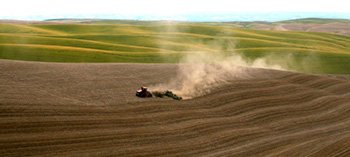
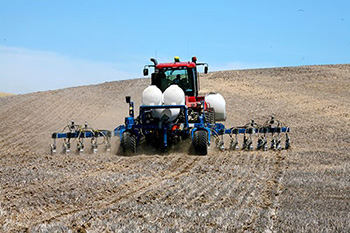
On
the Snake River, Blue Mountain Landscape at Walla, Walla,
Washington. Exactrix
single disc tool bars band TAPPS at 6 inch depth into chemical
fallow at Walla Walla, Washington. May and June is the period
when nutrients are applied for fall wheat seedings. Seeding of
fall wheat occurs in October. With a No-tillage banding
technique it is possible to seed into a good moisture zone for
immediate germination.
Page 10
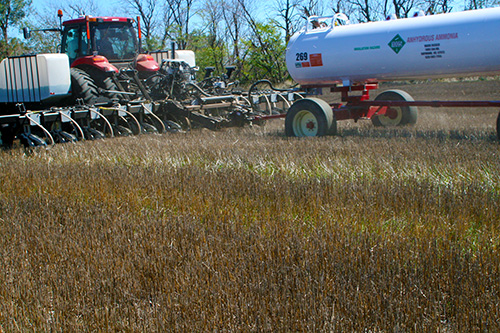
In
central Kansas winter wheat follows winter wheat. Standing stubble
maintains the summer moisture to the surface. Pre-plant banding with
single disc openers keeps the stubble up. The single disc seeder can
generate a high quality stand due to even moisture distribution. The
winter wheat seeding follows the banding in about 1 month. Approximately
50% of the nutrients are applied pre-plant.
The
final 50% is applied into growing roots once the stand is established
and the crop potential is known. Poor
weather conditions reducing crop potential allows the nutrients to be
stored in the tank and not in the soil. Keeping costs in line with
production potential allows greater profitability or an ability to
minimize the loss.
Further
reviewed, wet conditions due to heavy snows or rains may allow more
TAPPS nutrients to be applied to extract a higher yield potential of
winter wheat.
The final 50% investment is only made when the potential has been
revealed. Typically TAPPS banded in the soil at the 6 inch level will
outperform streamer bar application of solution 32-0-0 by at least
8-15%.
A
30 foot, high speed, Mustang tool bar on 15 inch centers is a good
choice for typical Kansas farms with 1,500 to 5,500 acres in a
rotation of Milo, Winter Wheat, Corn, Soybeans, Sunflower, and
soybean.
Page 11
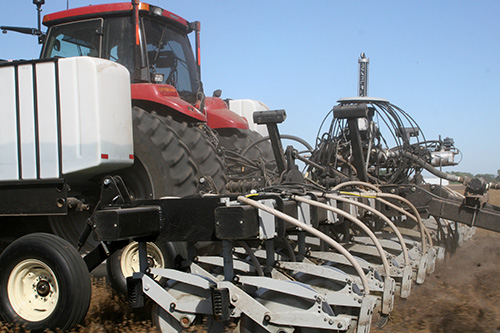
Non-mobile
P and K nutrients can be banded into dormant alfalfa. This allows
older stands to be renovated and improved. Alfalfa can also be rotated
with No-tillage using pre-plant TAPPS banding techniques with a
typical No-till corn planter. Phosphate
and Potassium are twice as crop effective compared to top dressed
applications of dry fertilizer. Typical materials applied are 0-52-0,
10-34-0, Fluid Grade KCL. Alfalfa is the fourth largest crop at 17.6
million acres and 11.7 billion dollars in value.
Dry
fertilizer top dressing of Alfalfa also reduces stands producing poor
root development. Banding Alfalfa at the 6 inch depth develops roots
where fertilizer is placed allowing the plant to handle irregular
watering or drought pressure.

Smith
Center, KS, North Central Kansas, Banding into growing winter wheat
improves profits and allows much higher flexibility in growing winter
wheat. Milo is grown in
rotation with soybeans. A
40 foot tool bar is utilized by this large 7,000 acre producer.
Page 12
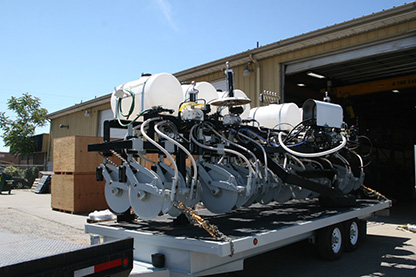
A
20 foot, 15 inch band center, three point tool bar.
Set up on 15 inch centers.
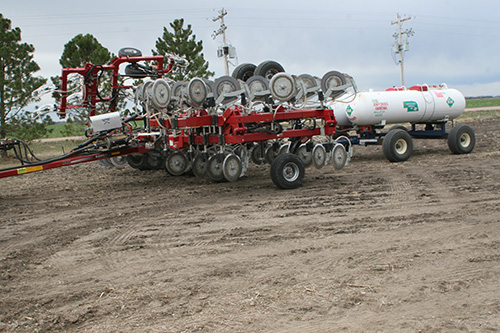
From
widths of 20 feet to 61.5 feet. From 1,000 acres to 14,000 acres
producers pick the tool to get the job done.
Almost always on 15 inch band spacing on the central Great
Plains is the common spacing. The 12 inch band spacing is utilized in
the Northern Great Plains where spring wheat is in rotation. A
61.5 foot tool bar can band 500 to 700 acres per day in irrigated
Nebraska. The producer can apply TAPPS right up to planting time.
Applying
at planting time on 15 inch centers assures maximum nutrient
efficiency with very low risk of leaching loss of N. Thus the
application becomes better than side dress applications typically
utilized in the area. The
Stabilized TAPPS assures nutrients will be supplied in the root zone.
Sandy soils with low CEC can be the exception.
Page 13
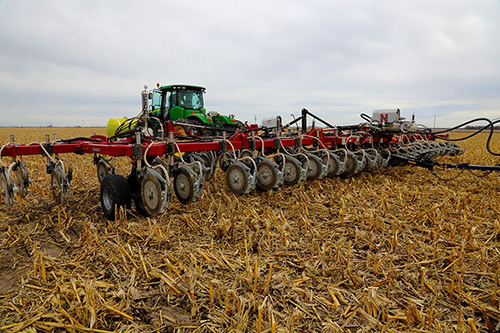
At
Shelton, Nebraska, TAPPS is applied right up to planting time with a
15 inch band spacing applicator.
The tool bar bands at depths to 6
inches.
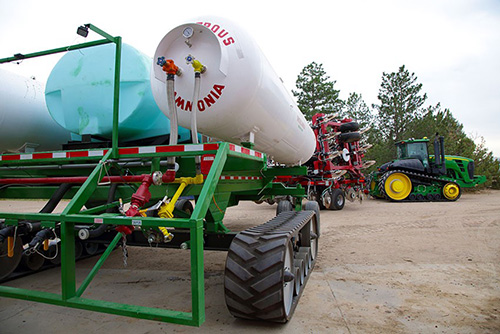
At Deerfield, KS a track trailer allows liquid delivery of 4,000
gallons of NH3 and 2,600 gallons of liquid 10-34-0 and 12-0-0-26S.
Page 14
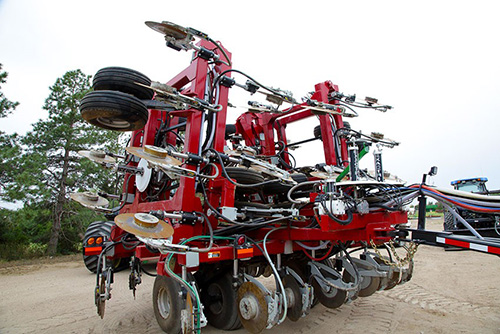
Exactrix
TAPPS banded on 15 inch band centers with Mustang openers. A 61.5 foot
applicator,
18.75 foot shipping width at 13.75 feet in height.
Liquid tanks are mounted on the tractor or the trailer.
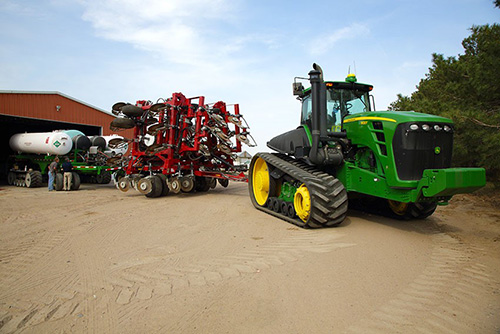
A
powerful economic TAPPS banding combination for dryland, irrigated,
and double crop irrigated production.
Page 15
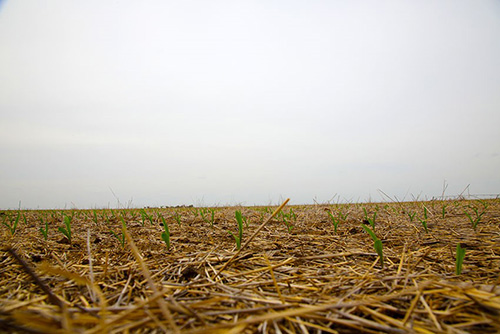
An April TAPPS application at the 6 inch depth into wheat stubble
resulted in a good stand of irrigated corn at Deerfield, KS.
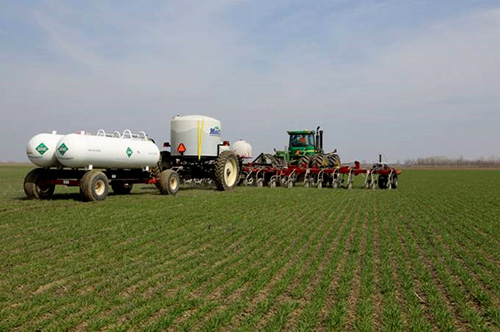
A March TAPPS application into winter wheat at Marshall, MO, at
the Levee of the Missouri River.
Page 16
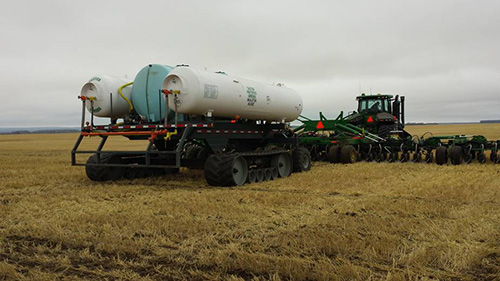
October TAPPS Application at 58 degrees North, Manning Alberta. Fall
banding for spring canola.
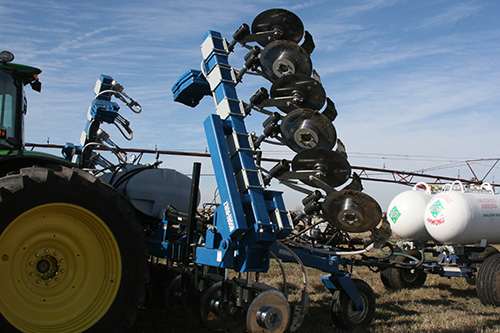
November TAPPS Application at
Seward , Nebraska
Page 17
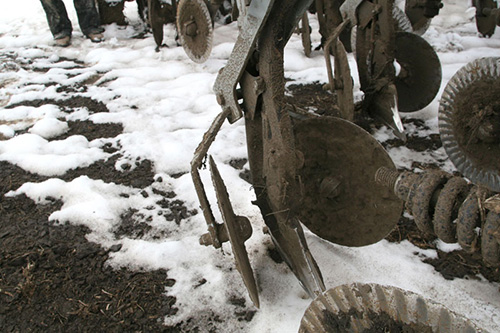
Low disturbance shank opener
from Horsch has proven successful.
The opener tolerates rocks and handles dry conditions well.
The fluted cutting coulter creates a progressive slot that
allows the shank to penetrate easier.
Lower soil disturbance is observed.
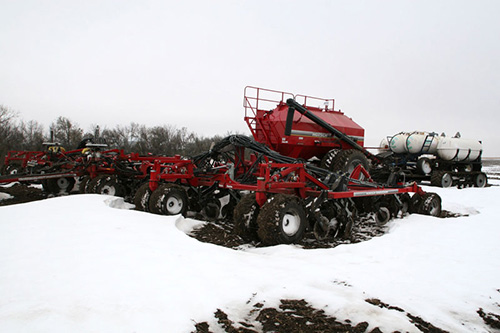
November
TAPPS application at Seneca, South Dakota.
Page 18
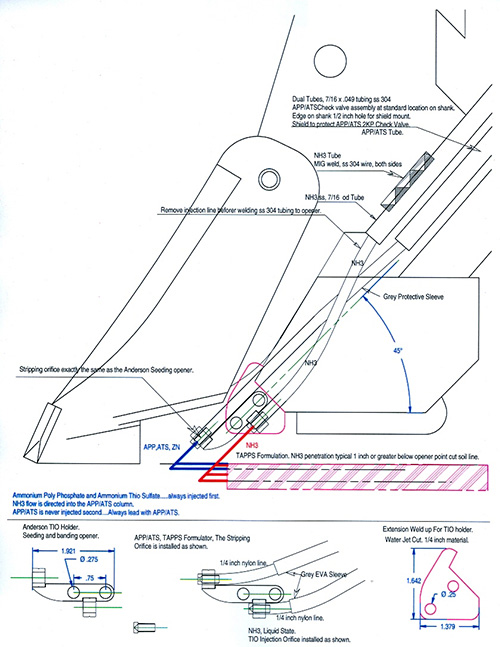
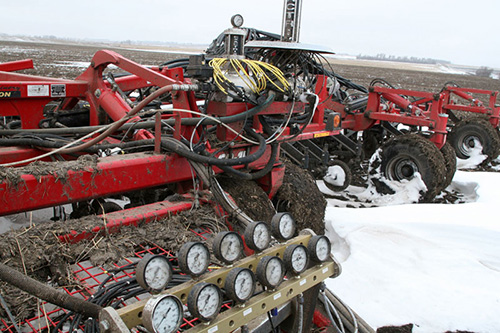
Horsch injection
system. Typically a
cutting coulter precedes the opener.
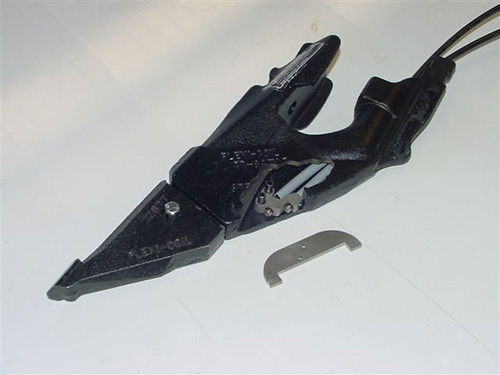
Flexicoil Stealth opener set up
for banding.
Typically no cutting coulter is used.
Page 19
Single
Pass applications are desirable for Milo production.
Wing injection is utilized on 20 inch centers.
No-tillage
Milo allows maximum moisture infiltration. The proximity of the band
also allows triple chelated iron micronutrients on high pH soils. Some
of most efficient rates of nutrient application are accomplished with
the Deere 1990.

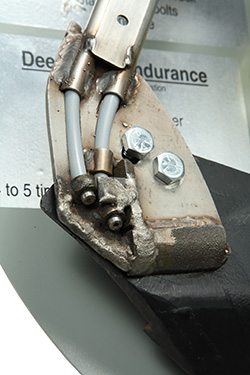
 The
Deere 1990 can band only on 10 inch or 20 inch centers. The same
machine can wing inject TAPPS on 10 inch
seed row centers or 20 inch seed row centers.
The
machine can be used as a pre-plant tool bar for corn production.
Typically set on 10 inch band spacing.
The
Deere 1990 can be set up with large opener blades to improve
endurance. The blades are 5/16 x 19.1 diameter with a 1.25 inch single
edge.
The
opener can also be set up with polyurethane depth wheels.
A
good machine with lots of possibilities. The Deere 1990 is very
successful on the central Great Plains.
Page
20
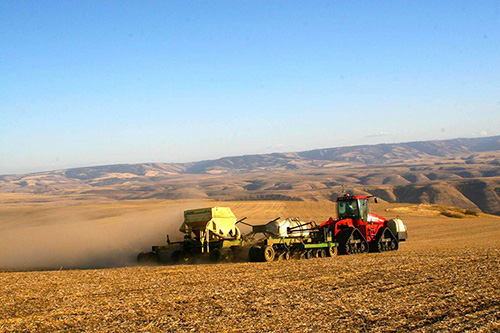
The
Mid Row Banding Deere 1895 with AgPro individual seed run meters.
The single pass Deere 1895 is popular in the hillside area
of the PNW.
The
1895 can also be used successfully to fall band on 20 inch centers for
corn production in North Dakota.
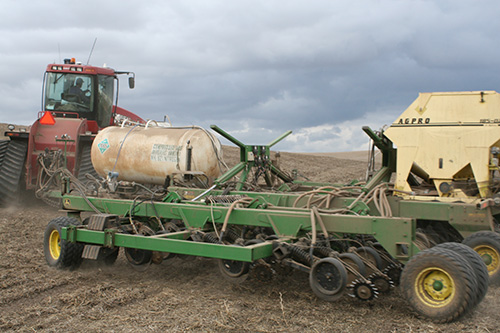
Page
21
Sandy
soils with low CEC require side dress applications and pre-plant
applications at Yuma, Colorado.
Mustang
openers require less
horsepower than shank openers and will band up to 7 inches in depth
without Exactrix Gyro Counterweights.
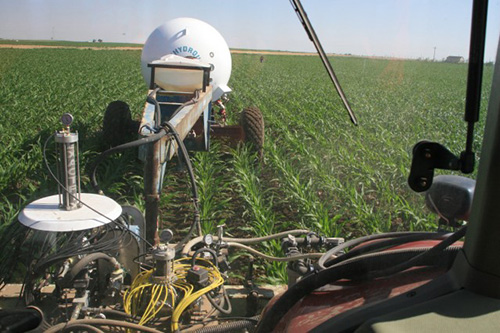
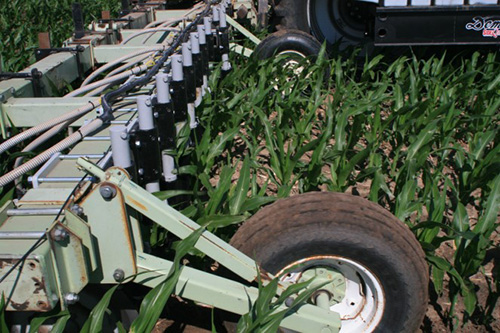
Test,
Test, Test….USDA-ARS, Plot Drill at 15 feet.
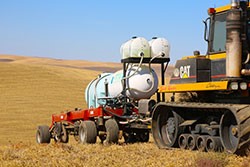
Click on image to see video
Page
22
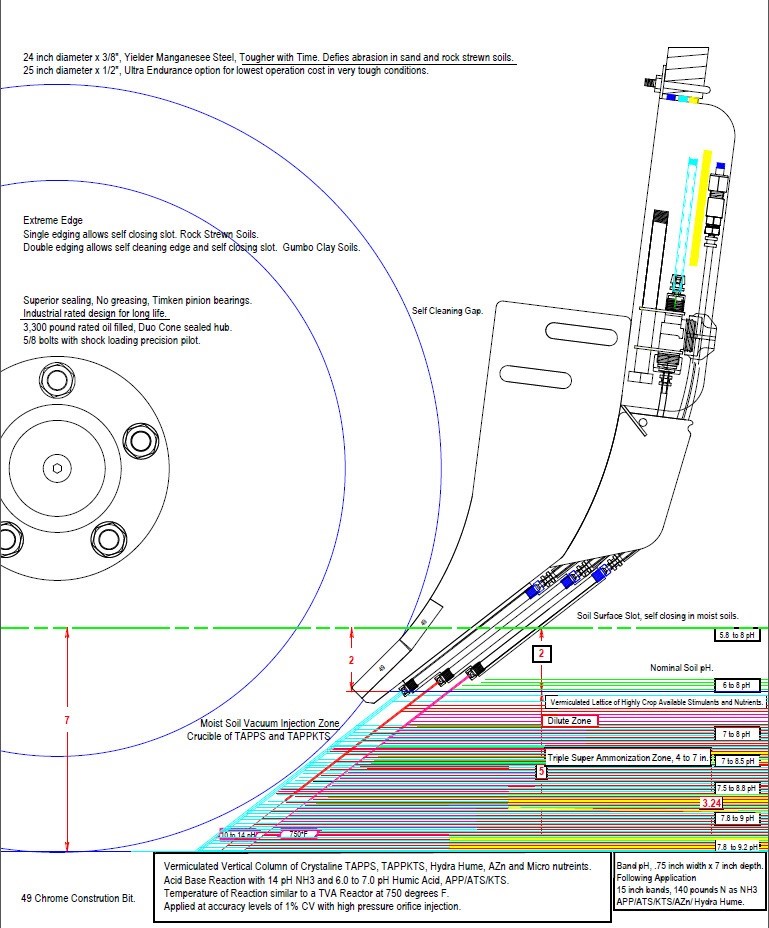
Page
23
|
See more Exactrix Videos HERE
http://exactrix.com/EOYT.htm
Meeting
your formulation needs.
www.exactrix.com/TF.htm
Picking
your metering systems.www.exactrix.com/EPM.htm
Need
more information on advanced crop production.
www.exactrix.com/EWAC.htm
For
More Information:
(509)
254 6854
|